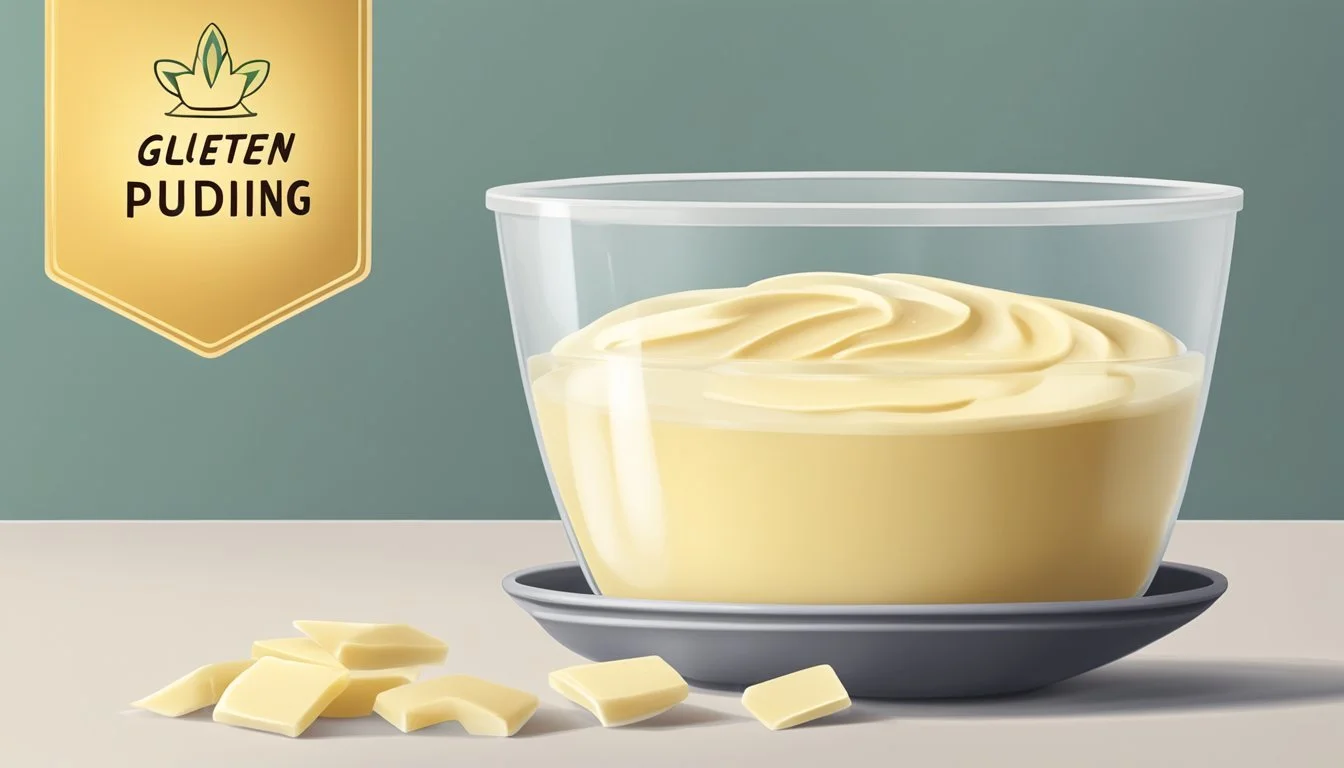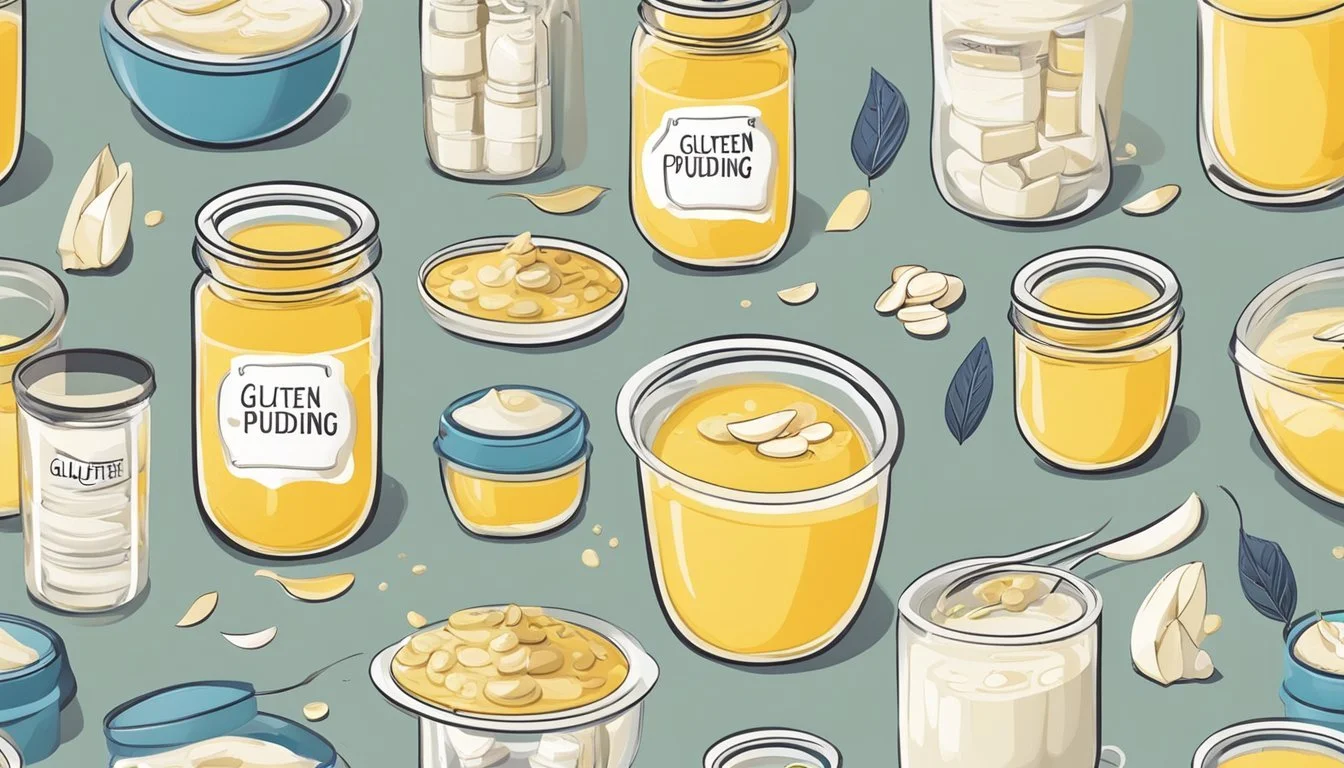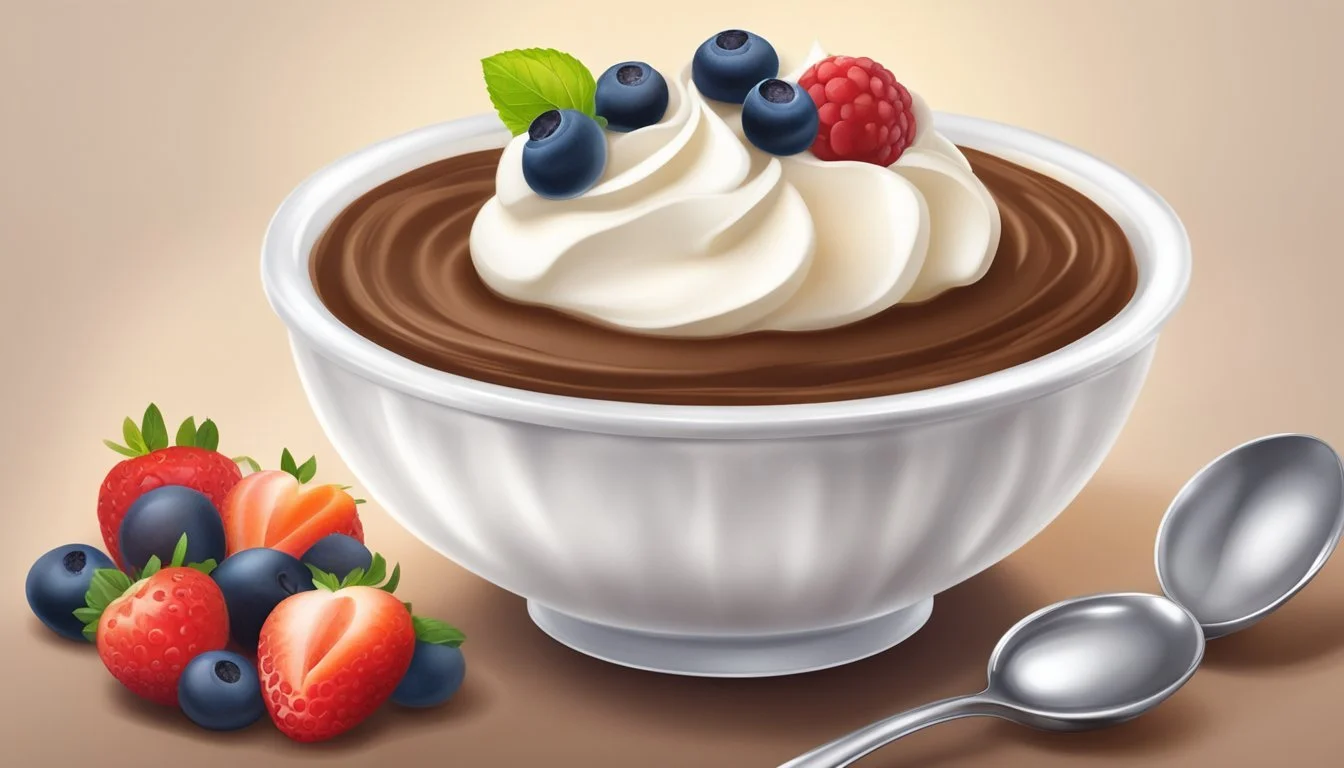Is Vanilla Pudding Gluten-Free?
Identifying Safe Dessert Options
Vanilla pudding is a classic dessert loved for its smooth texture and rich flavor, and many people wonder if it can fit into a gluten-free diet. As awareness of celiac disease and gluten intolerance has risen, the availability of gluten-free alternatives has expanded. For those with dietary needs that require the avoidance of gluten—a protein found in wheat, barley, and rye—the question of whether vanilla pudding is gluten-free is of particular importance.
Most brands of instant vanilla pudding, including popular options like Jello, are indeed gluten-free. The absence of flour or wheat-based thickeners in these products makes them a suitable treat for those with celiac disease or a sensitivity to gluten. However, it is essential for consumers to read the packaging carefully, as recipes and manufacturing processes can change, and some brands may include gluten-containing ingredients or be subject to cross-contamination.
For homemade vanilla pudding, the key to keeping it gluten-free lies in the selection of thickening agents. Cornstarch is commonly used as a gluten-free alternative to flour, providing the desired consistency without the introduction of gluten. By using gluten-free ingredients and ensuring that all products, from the milk to the cornstarch, are free from gluten contamination, individuals can prepare a gluten-free vanilla pudding at home, giving them control over what goes into their dessert.
Understanding Gluten Free
The shift towards gluten-free products primarily assists those with celiac disease and gluten sensitivities, underpinning the significance of trustworthy food labeling and understanding what "gluten-free" truly embodies.
What is Gluten-Free?
A product labeled gluten-free does not contain any proteins from wheat, barley, rye, or their crossbred varieties. The FDA mandates that gluten-free products must contain less than 20 parts per million of gluten, ensuring safety for individuals with celiac disease or gluten intolerance.
Example of Gluten Ingredients to Avoid:
Grains Containing Gluten Common Gluten-Containing Products Wheat Breads, cakes, cookies Barley Malt, food coloring Rye Rye bread, rye beer
Importance of Gluten-Free Diet
For those with celiac disease, adhering to a gluten-free diet is essential; ingestion of gluten triggers an immune response that damages their small intestine lining. This diet is not only a trend but a medical necessity for them. Furthermore, individuals with gluten sensitivities or wheat allergies may experience adverse symptoms from gluten ingestion, underscoring the importance of a gluten-free diet for their comfort and health.
Evaluating Food Labels
Scrutinizing food labels is critical for individuals requiring a gluten-free diet. The label "gluten-free" suggests safety for consumption, but the presence of a gluten-free label does not always guarantee the absence of gluten ingredients. Individuals must review the ingredients list thoroughly to check for hidden sources of gluten or potential cross-contamination, even when labels indicate the product is gluten-free.
Keys to Label Evaluation:
Check for a gluten-free certification: Indicates third-party testing for gluten content
Read the complete ingredients list: Look beyond the gluten-free claim
Be aware of manufacturing statements: Such as "made in a facility that also processes wheat."
By understanding and applying these strategies, those with dietary needs related to gluten can make safer and more informed food choices.
Is Vanilla Pudding Gluten-Free?
Determining whether vanilla pudding is gluten-free depends on multiple factors, such as the type of pudding (store-bought or homemade) and the manufacturing environment. Gluten-free consumers should pay close attention to product labels and recipes.
Store-Bought Vanilla Pudding
Most store-bought vanilla puddings, including brands like Jell-O, classify some of their pudding products as naturally gluten-free. However, it is crucial for individuals with celiac disease or gluten intolerance to scrutinize the label for any indication of gluten-containing ingredients or additives. Many instant mixes might have additives that contain gluten, so verification is necessary. The safest choices are products that are certified gluten-free.
Homemade Vanilla Pudding
Homemade vanilla pudding gives the cook complete control over the ingredients. A typical recipe includes milk, sugar, and vanilla extract, which are all naturally gluten-free. Some recipes might call for a thickening agent like cornstarch, which is also gluten-free. By making pudding at home, consumers can ensure the purity of their dessert, provided all ingredients used are free of gluten.
Cross-Contamination Concerns
Even when a product is naturally gluten-free, there is always a risk of cross-contamination in facilities that also process gluten-containing products. For Jell-O and other brands, consumers should look for a gluten-free label or certification to ensure the product is safe. In homemade pudding scenarios, it is essential to prevent cross-contamination by using clean utensils and avoiding contact with gluten-containing products.
Ingredients Breakdown
When assessing whether vanilla pudding is gluten-free, it is critical to meticulously analyze the ingredients that formulate the dessert. Specific components can reveal the presence of gluten, an important consideration for those with celiac disease or gluten sensitivity.
Common Ingredients in Vanilla Pudding
The main ingredients found in vanilla pudding typically include:
Sugar: Serves as the sweetening agent.
Starch: Acts as a thickener, often cornstarch is used for its gluten-free properties.
Milk: Provides the creamy base of the pudding.
Vanilla Extract: Imparts the signature vanilla flavor.
Some commercial vanilla puddings might also contain additional thickeners, preservative agents, or flavorings.
Identifying Gluten in Ingredients
Gluten is a protein found in:
Wheat: Often in the form or flour.
Barley: Can be present in malt extract or flavorings.
When evaluating ingredients for gluten content, individuals must examine for any wheat, barley, or related derivatives that might indicate the presence of gluten. For example:
Flour: Some puddings may use flour as a thickener, which is typically derived from wheat and therefore contains gluten.
Modified Food Starch: If not specified, this could be sourced from wheat and be a hidden source of gluten.
Gluten-free vanilla pudding will rely on gluten-free starches such as cornstarch and omit any wheat or barley-based ingredients.
Making Vanilla Pudding Gluten-Free
Creating gluten-free vanilla pudding at home involves choosing the right ingredients and substitutes to cater to dietary restrictions without compromising on flavor or texture.
Gluten-Free Vanilla Pudding Recipes
To make a homemade gluten-free vanilla pudding, one can start with a basic recipe that utilizes gluten-free thickeners. Cornstarch is a popular gluten-free thickening agent commonly used in pudding recipes. Alternatively, tapioca starch can be used for a slightly different texture.
Here's a simple outline of a gluten-free vanilla pudding recipe:
Ingredients: sugar, cornstarch or tapioca starch, salt, milk (or dairy-free alternative), egg yolks, butter, pure vanilla extract.
Method:
Whisk together sugar, starch, and salt in a saucepan.
Gradually add milk and egg yolks, ensuring continuous whisking.
Cook the mixture on medium heat until it starts to bubble and thicken.
Remove from heat and stir in butter and vanilla.
Care should be taken to ensure that all flavoring ingredients, such as vanilla extract, are labeled gluten-free to avoid cross-contamination.
Substitutes for Common Gluten Items
In vanilla pudding recipes, certain ingredients have gluten and need to be substituted. Here's a brief guide:
Gluten Item Substitute Flour (as thickener) Cornstarch or tapioca starch Regular milk Almond milk, coconut milk, or other dairy-free options
When preparing gluten-free vanilla pudding, it is critical that all ingredients, including any additional flavoring or coloring agents, are verified to be gluten-free. This ensures the safety and integrity of the gluten-free dish for those with celiac disease or gluten sensitivities.
Cooking and Storage Tips
In creating gluten-free vanilla pudding, attention to detail during cooking and proper storage techniques ensure the dessert maintains its quality and taste.
How to Make Vanilla Pudding
One commences by whisking together sugar, cornstarch, and a pinch of salt in a saucepan. Milk and cream are gradually added, ensuring a smooth mixture. The pudding should be cooked over medium to medium-high heat. Continuous whisking is vital until the pudding starts to thicken and reaches a gentle boil. At that point, the heat should be reduced to low and stirring should continue until the desired thickness is achieved. Usually, the total time from prep to cook is around 15 to 20 minutes.
Ingredients:
Sugar
Cornstarch
Salt
Milk (full-fat for richness)
Cream or half-and-half
Cooking Steps:
Combine dry ingredients in a saucepan.
Whisk in milk and cream, ensuring no lumps.
Cook until boiling then reduce heat, stirring until thick.
Proper Storage of Vanilla Pudding
Once the pudding has finished cooking, it should be removed from heat. If butter and vanilla extract are part of the recipe, they can be stirred in at this point. The hot pudding must then be covered with plastic wrap, ensuring the wrap touches the pudding's surface to prevent a skin from forming. It is then refrigerated to set properly which normally takes around 2-4 hours. Properly stored in an airtight container, vanilla pudding can last in the refrigerator for up to 5 days.
Storage Steps:
Cover the surface with plastic wrap.
Refrigerate until set.
Transfer to an airtight container for longer storage.
Serving Suggestions
When presenting vanilla pudding, it should be noted that gluten-free options offer the same versatility in serving as traditional counterparts. The following suggestions can elevate a simple dessert into something visually appealing and even more delectable.
Creative Ways to Serve
Banana Pudding: Layer gluten-free vanilla pudding with slices of bananas and gluten-free vanilla wafers to create a classic banana pudding. Top with a dollop of whipped cream for added indulgence.
Trifles: Construct a trifle by layering gluten-free vanilla pudding with gluten-free cake cubes, fresh berries, and whipped cream. Serve in a clear glass to showcase the layers.
Parfaits: Serve vanilla pudding in a parfait glass, alternating with layers of gluten-free granola, fruit pieces, or jam. This not only adds texture but also introduces new flavors to the dish.
The incorporation of gluten-free vanilla pudding into these serving suggestions ensures that even individuals with gluten sensitivities can enjoy a variety of flavorful and visually appealing desserts.
Potential Health Information
Vanilla pudding can be both a delightful treat and a source of nutritional value, depending on its ingredients. The health information for vanilla pudding is largely influenced by its nutritional content which varies based on how it is prepared.
Nutritional Value of Vanilla Pudding
Vanilla pudding typically contains milk, which is a source of calcium and may also provide vitamins and minerals essential for bone health. However, the nutritional value differs significantly between homemade and store-bought varieties. Here is a breakdown of the nutrition information one might expect from a typical serving of vanilla pudding:
Calories: They vary, but a single serving can range from approximately 100 to 150 calories.
Total Fat: Usually has a low to moderate fat content, around 0-5 grams per serving, but this can be higher in full-fat versions.
Cholesterol: Depending on the milk used (full fat, skim, etc.), cholesterol content can range from 5 to 20 milligrams.
Health: Consumption in moderation can fit into a balanced diet, but it is important to be aware of sugar content and potential additives in store-bought versions. Vanilla pudding made from scratch allows for control over ingredients, potentially leading to a healthier option.
In addition, the presence of gluten in vanilla pudding is influenced by the thickening agents and additives used in its preparation. When maintaining a gluten-free diet due to celiac disease or gluten sensitivity, one should scrutinize the labels of store-bought mixtures to ensure they are free from gluten-containing ingredients. Homemade versions can be made gluten-free by using pure ingredients and avoiding cross-contamination.







